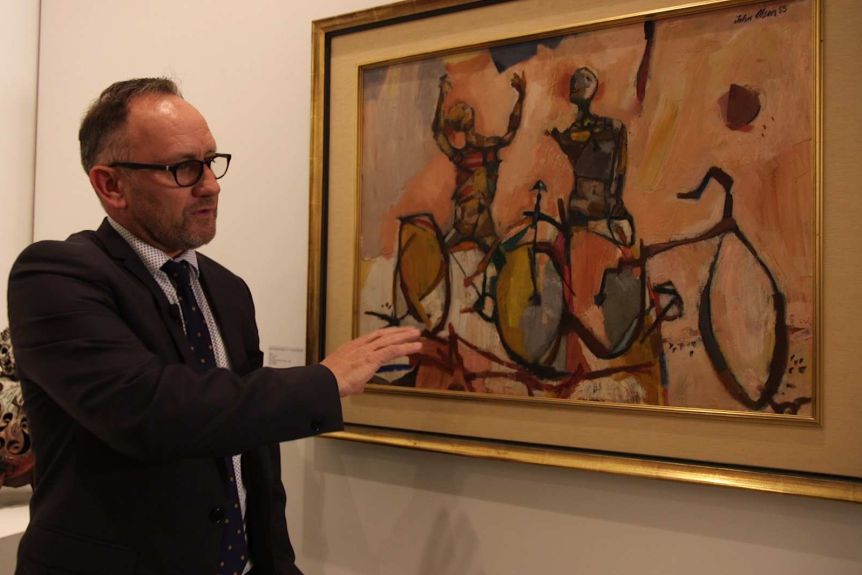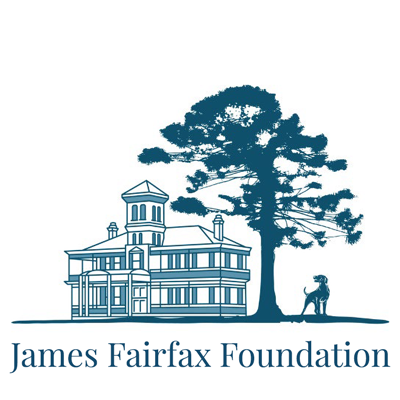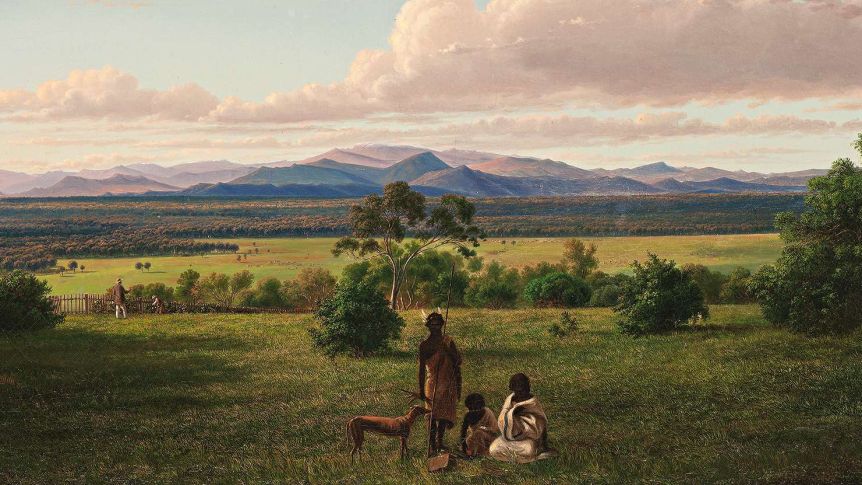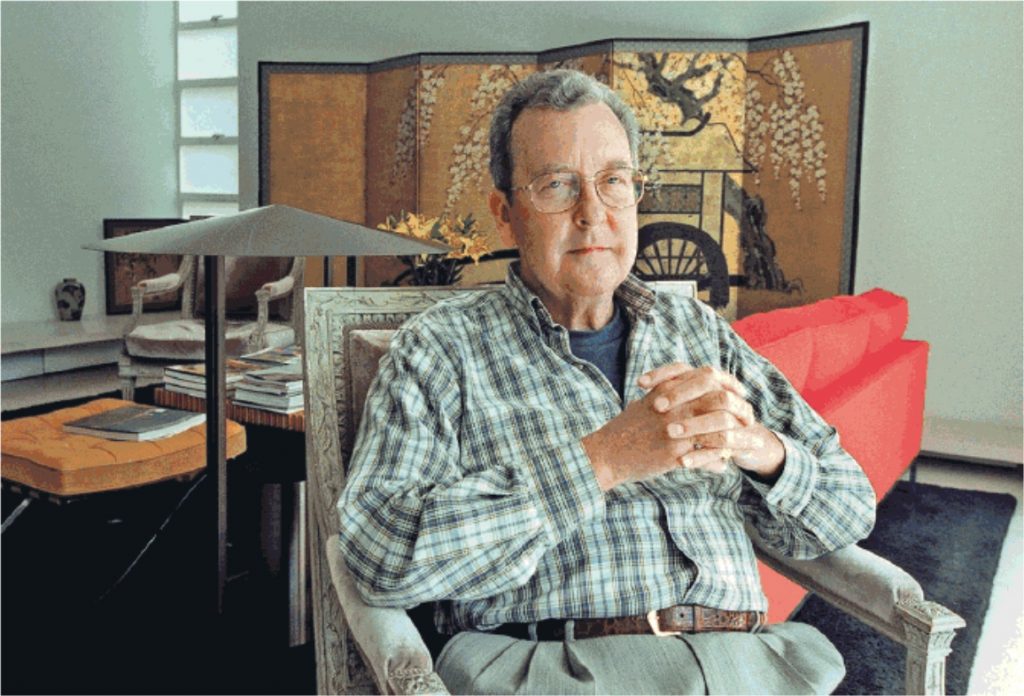June 2017
Uncle James was an enigma in more ways than one, a paradox … aren’t we all ?
Shy, yet famous. Wealthy, yet not domineering. Powerful, yet determined to be respectful. Solitude-loving, yet unbelievably well-connected. Intellectual, yet practical. Non-judgemental, yet discriminating … and an Australian to boot … a rare bird indeed!
Good Lord – what on earth will I buy him for Christmas ?! (Practical items relating to the table service of cheese and wine, and books on World War 2, as it turned out …)
Much of his life was not of his own choosing, but James Fairfax’s art collection most certainly was. How any great collector develops their eye and taste would be an interesting thing to track, and sadly a task beyond both the scope of this article and my meagre psychoanalytical abilities. I would however make the point that in James’ case, as with many collectors, he loved the fact that he was in control.
Great collectors are natural obsessives, and one may easily make the argument that truly great collecting is a category of mental illness – but for James, the art works were also his babies.
James’ proximity to the world of the arts was part of his Fairfax family upbringing, and, like his sister, my mother Caroline (a great collector in her own right), he just breathed it all in, from the word go, every single day. They both grew up in the expectation of being involved in cultural matters, and with the imperative of contributing to them as much as possible. Noblesse Oblige, but without the cynicism that phrase engenders these days. Contributing to society, as its own reward.
His first purchase of visual art was at the tender age of 12, in 1945, from the Macquarie Galleries in Sydney (it was an Eric Wilson streetscape of Paris.) Wilson had taught James art at Cranbrook School, and sadly died of cancer the following year, but already, one can see that an intimate personal connection to the work was vital for it to pass muster in James’ eyes. A thread had been started.
The young James would often visit galleries with his mother and aunt but would also of course participate in theatre, opera, ballet, everything artistic. Art was an extension of life, not some optional add-on. A great illustration of this was when his father, Sir Warwick, famously sent Russell Drysdale out to far western NSW to document the particularly savage drought of 1944, which resulted in numerous Australian masterpieces being created (including The Bar, Albury, in this current auction). This was no affectation – it was simply what the Fairfax family saw as important, both to them as individuals, and as a family, a company, and for the community they lived in.
James himself is best known for his fondness of Old European Masters (Titian, Rubens, Canaletto, Rembrandt, Ter Brugghen, Davide etc) and Australian Moderns (he knew them all personally.) The James Fairfax Gallery in the AGNSW bears adequate testimony to that – let alone his remarkable gifts to other major State galleries in Australia. This European bent is of course a nod to his own Anglican background, and his immersion in European culture through his Oxford years – the happiest years of his life, as he often stated – it is what he knew best, and most instinctively. But his collection and artistic desires were in fact far broader than that.
I actually think that a more revealing side to James Fairfax’s psyche is shown by his passion for collecting Asian art and artefacts – lesser known, and perhaps a lesser collection on its own, compared to the Europeans, but just as strong a force in his life. His first overseas trip in 1947 was to Japan, aged 14, and it had a major impact on him, his cultural awareness, his developing taste, and collecting eye.
In 1988, and again in 1990, in order to find the mental and emotional space to write his memoirs, following a tumultuous few years, he returned to Japan, stylishly retreating to a 16th century Samurai house near Kyoto – with of course, many other trips, all over Asia, in between, and afterwards. Rural Japan was the perfect place for James to find the peace and serenity needed to reflect on his own quite extraordinary life.
My point is that Asian (and especially Japanese) religious, philosophical and artistic thought was a great attraction to James – and not just intellectually – he really absorbed what it meant to be Zen. To be present.
And through this, he managed to attain a degree of transcendence that I have rarely, if ever, seen in anyone else. Thus, it was simply a real delight to spend time with him, and a lesson in life to see how he lived his. I have said on many occasions that James was the wisest person that I have ever had the privilege to meet. And by that I certainly do not mean that he was perfect – not at all – I simply mean that James had wisdom and insight in abundance.
It is this wisdom that permeates his collection.

Deutscher and Hackett’s Henry Mullholland with John Olsen’s work The Bicycle Boys Rejoice, one of the most well known paintings in the James Fairfax collection. (ABC News)
Several art experts have confided in me that, if James had purchased an example of a particular artists’ work, then that was the work by which to judge that artist’s output. A telling comment.
Much of his extraordinary art collection has already been gifted to the public. More will be in coming months – and proceeds from this auction sale will help create a charitable foundation that will benefit Australians for generations, particularly in the area of children’s medical research and treatment, and other areas as well. An appropriate legacy, befitting the benevolent and generous attitude of the man himself.
James Fairfax’s art collection and its subsequent benefaction, is only one aspect of this remarkable man – his contributions to journalism, politics, public debate, medical research, conservation, education, scholarships, philanthropy in general, his knowledge and friendships with artists from Patrick White to Donald Friend, his utterly beautiful houses and gardens, parties with everyone from the Duke and Duchess of Windsor, the Royal families of Britain, Spain and elsewhere, to celebrities major and minor, his connections and contributions both in Australia and internationally, are well worthy of a proper biography – and no doubt that will be attempted at some stage. His dining companions alone would make an extraordinary and fascinating list, and be the envy of the most arduous socialites.
But beyond all that, Uncle James was a thoughtful and kind gentleman, and a force for good, who lead by example, and who made a remarkable and lasting contribution to Australia’s cultural life, and, by the way, he was without doubt one of Australia’s pre-eminent art collectors. I sincerely doubt there will be another like him.




